Abstract
This project introduced innovation in a concept design of hammer which is a tool used to blow (a sudden impact) to an object. Some technical contradictions occurred in the design, which made it difficult to find a solution except compromise. When TRIZ was used in the design, things seemed to get easier. A surprising and almost perfect solution was found, and finally it was put into practice smoothly.
Introduction
A hammer is a tool that delivers a blow (a sudden impact) to an object. A hammer is basically a force amplifier that works by converting mechanical work into kinetic energy and back. Most hammers are hand tools used to drive nails, fit parts, forge metal, and break apart objects. Hammers vary in shape, size, and structure, depending on their purposes. Hammers are basic tools in many trades. The usual features are a head (most often made of steel) and a handle (also called a helve or haft). A traditional hand-held hammer consists of a separate head and a handle, fastened together by means of a special wedge made for the purpose, or by glue, or both. This two-piece design is often used, to combine a dense metallic striking head with a non-metallic mechanical-shock-absorbing handle. Some hammers are one-piece designs made primarily of a single material. A one-piece metallic hammer may optionally have its handle coated or wrapped in a resilient material such as rubber.
Objectives
- To innovate the design of a hammer to make it more efficient using TRIZ problem solving.
- To minimize the cost used to buy hammer using TRIZ problem solving.
- To improve the components of hammer to reduce space consumption by TRIZ problem solving.
Problem Statement
For years, workers have been struggling to bring different type of tools to their worksite. One of the main tool used by the construction workers are the hammer. A Hammer is a mechanical tool that delivers a sudden impact to an object. The essential part of hammer is head, a compact solid mass that is able to deliver the blow to the intended target without itself deforming and a handle, the part where the user hold the hammer. Commonly, hammers are used to drive nails, fit parts, forge metal and break apart objects. There are different types of hammers in use, they vary in shape, size and structure. Such hammers are traditional curved claw hammer and Drywall hammer. Traditional claw hammer are used to drives nails well and removes nails easily with the rocking action of its curved claw while Drywall hammer chops errant bits of drywall and sets nails without breaking through walls’ paper faces. Hammers are categorized as a heavy type tool thus creating problem for the workers to bring many types of hammer to their worksite.
- Inconvenient
Variety in the number of hammer needed to complete in a certain type of work causes difficulties to the workers in bringing it to their worksite. As we already know, each hammer has its own function. Hence, workers need to bring each of the type of hammer to complete their project. If it is improved it can ease the worker’s job in bringing different type of hammer without consuming too much energy.
- Costly
Workers are forced to buy each type of hammer so that they can accomplish their job. This causes extra money to be spent to buy each type of hammer. Thus the total cost of project will be increased gradually. Buying less number of hammer with the same functional would causes the cost to be decreased significantly. This would give the advantage to worker as it will cut the cost to buy a hammer.
- Space consuming
The average size of a hammer is bigger than other tool creates a problem which is in storing it. Each hammer requires a huge size of storage space to be stored and with the variety type of hammer, the needs for bigger size storage increases with the number of hammer. If less spaces are used to store this tool, more other tool can be used to fill the empty spaces. This increases the compatibility of the hammer.
Function Analysis
Subject (Tool)FunctionObject

 HandHoldHandle (Wood)
HandHoldHandle (Wood)

 Handle (Wood) HoldHammer head
Handle (Wood) HoldHammer head

 Hammer headHitNail
Hammer headHitNail
Component Analysis




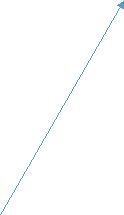














TRIZ tools
- Segmentation (#1)
- Divide an object into independent part
- Make an object easy to assemble and disassemble
- The head and the handle of the hammer can be connected and removed freely by user.
- The thread on the handle ease the user to connect the handle and the hammer head by twisting the head in a clockwise direction.
Function Analysis
|
Subject (Tool) |
Function |
Object |
|
|
|
Hand |
|
Handle (Steel) |
|
|
Handle (Thread) |
|
Traditional Curved Claw (Thread) |
|
|
Traditional Curved Claw (Thread) |
|
Nail |
|
|
Handle (thread) |
|
Drywall Hammer (Thread) |
|
|
Drywall Hammer (Thread) |
|
Nail |
|
|
Handle (Thread) |
|
Body Mechanics Hammer (Thread) |
|
|
Body Mechanics Hammer (Thread) |
|
Nail |
|
|
Handle (Thread) |
|
Toolmaker’s Hammer (Thread) |
|
|
Toolmaker’s Hammer (Thread) |
|
Nail |
Component Analysis


















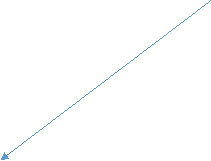






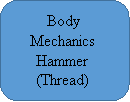

Contradiction
The feature that we want to improve is the strength of the handle by using steel. However the drawback of using steel as a handle is it is very heavy. So by using 39 parameters matrix, we have decided to choose composite material as the handle. The composite material that we have chosen is graphite fiber reinforced epoxy. This type of handle offers a blend of stiffness, lightweight and durability. These handle also encased in a high polycarbonate resin. The addition of this material around the handle increase shock absorption, improves chemical resistance and offers protection against accidential overstrike thus reduce handle failure.


- Wooden Handle Steel Handle Composite Handle


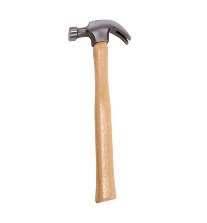
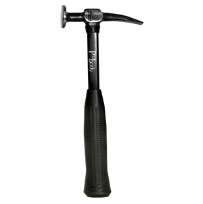

Wooden Handle Steel HandleComposite Handle
Partial Triz Contradiction Matrix (1 to 14)
|
|
|
Weight of moving object |
Weight of stationary object |
Length of moving object |
Length of stationary object |
Area of moving object |
|
1 |
2 |
3 |
4 |
|
||
|
1 |
Weight of moving object |
+ |
15, 8, 29,34 |
29, 17, 38, 34 |
||
|
2 |
Weight of stationary object |
+ |
10, 1, 29, 35 |
|||
|
3 |
Length of moving object |
8, 15, 29, 34 |
+ |
15, 17, 4 |
||
|
4 |
Length of stationary object |
35, 28, 40, 29 |
+ |
|||
|
5 |
Area of moving object |
2, 17, 29, 4 |
14, 15, 18, 4 |
+ |
||
|
6 |
Area of stationary object |
30, 2, 14, 18 |
26, 7, 9, 39 |
|||
|
7 |
Volume of moving object |
2, 26, 29, 40 |
1, 7, 4, 35 |
1, 7, 4, 17 |
||
|
8 |
Volume of stationary object |
35, 10, 19, 14 |
19, 14 |
35, 8, 2, 14 |
||
|
9 |
Speed |
2, 28, 13, 38 |
13, 14, 8 |
29, 30, 34 |
||
|
10 |
Force (Intensity) |
8, 1, 37, 18 |
18, 13, 1, 28 |
17, 19, 9, 36 |
28, 10 |
19, 10, 15 |
|
11 |
Stress or pressure |
10, 36, 37, 40 |
13, 29, 10, 18 |
35, 10, 36 |
35, 1, 14, 16 |
10, 15, 36, 28 |
|
12 |
Shape |
8, 10, 29, 40 |
15, 10, 26, 3 |
29, 34, 5, 4 |
13, 14, 10, 7 |
5, 34, 4, 10 |
|
13 |
Stability of the object’s composition |
21, 35, 2, 39 |
26, 39, 1, 40 |
13, 15, 1, 28 |
37 |
2, 11, 13 |
|
14 |
Strength |
1, 8, 40, 15 |
40, 26, 27, 1 |
1, 15, 8, 35 |
15, 14, 28, 26 |
3, 34, 40, 29 |
40-Composite Material, 26-Copying, 27-Cheap Short Living Object, 1-Segmentation
Function Analysis
|
Subject (Tool) |
Function |
Object |
|
|
|
Hand |
|
Handle (Composite Material) |
|
|
Handle (thread) |
|
Traditional Curved Claw (Thread) |
|
|
Traditional Curved Claw (Thread) |
|
Nail |
|
|
Handle (thread) |
|
Drywall Hammer (Thread) |
|
|
Drywall Hammer (Thread) |
|
Nail |
|
|
Handle (thread) |
|
Body Mechanics Hammer (Thread) |
|
|
Body Mechanics Hammer (Thread) |
|
Nail |
|
|
Handle (thread) |
|
Toolmaker’s Hammer (Thread) |
|
|
Toolmaker’s Hammer (Thread) |
|
Nail |
Component Analysis



























Conclusion
As conclusion, problem in reality can be practically solved using TRIZ problem solving technique. TRIZ technique use the process of abstraction as it main way to solve problem. This means that we need to use TRIZ to determine problem, improving feature, and impact feature and lastly, come up with a solution for the related problem. There are many type of TRIZ process that are available for solving problem. However, for this problem the function analysis tool, the 39 parameters and 40 inventive principles is used. We have concluded that the main problems of a hammer are inconvenient, costly, and space consuming. All of the problems are solved by applying TRIZ technique. The final solution that have been analyzed is by producing an exchangeable hammer head with graphite fiber reinforced epoxy handle. This will encounter all of the problems of the common hammer. So, it can be concluded that TRIZ problem solving can be used to problem better and efficiently.
References
- http://me-mechanicalengineering.com/different-types-of-hammers/
- http://www.innovation-triz.com/
- http://www.triz.org/
- https://www.mindtools.com/pages/article/newCT_92.htm
- http://creatingminds.org/tools/triz/triz_contradiction_analysis.htm
- https://en.wikipedia.org/wiki/TRIZ
- http://www.triz-journal.com/
- http://www.mytriz.com.my/
- http://www.mindtools.com/pages/article/newCT_92.htm
- http://www.triz40.com/aff_Principles_TRIZ.php
Cite This Work
To export a reference to this article please select a referencing style below:













 5
5


